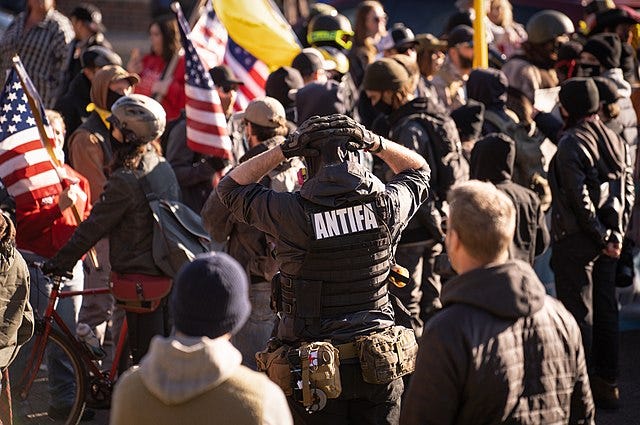Why has the Revolutionary Left been so quiet? And what happens after November? [Part 1]

The foot soldiers of the Revolutionary Left have been quiet this year.
With the exception of three low-level campaigns, the coterie of revolutionary anarchist groups and others on the Far Left have so far failed to kick start another 2020-esque rebellion.
Yet this was the basis for many predictions about how Summer 2024 would rival or perhaps be worse than the Summer of 2020.
That had been the conventional wisdom: it’s an election year, Trump is on the ballot, ergo nationwide riots. It hasn’t happened yet, and the Far Left is in far worse shape today than most realize.
Why?
Why did so many on the Right predict another summer of chaos, and why did it fail to materialize?
Why has Summer 2024 been even more tame than Summer 2016?
In short, why has the Revolutionary Left been so boring?
And, most importantly, what does this mean for a potential Trump win in November?
I can explain, but first some background.
Background
From 2015 to early 2021, we became accustomed to seeing black bloc demonstrations — the masked, black-clad rioters who attacked Trump supporters and fought police.
Virtually all black bloc activity ended by mid-2021. Portland, Oregon was unsurprisingly the last holdout, and it’s been a rare instance to have seen black bloc formations since.
There were, however, three notable campaigns since 2021:
Jane’s Revenge (2022): Following the Supreme Court’s overturning of Roe, an autonomous group called Jane’s Revenge began a months-long campaign of firebombing and vandalizing two dozen pro-life clinics and churches.
Stop Cop City (2021-2024): A second, sustained spike of violence occurred during the Stop Cop City campaign, just outside Atlanta, Georgia, from 2021 to this year. That campaign featured numerous acts of arson and vandalism throughout the region, in addition to some scuffles with police. While Stop Cop City still exists as a protest movement, the direct action effectively ended with the September 2023 arrest of 61 activists and militants who face RICO charges for their involvement in organized violent and destructive criminal offenses. (Of note, there are still 20 militants facing domestic terrorism charges over these activities.)
Pro-Palestine direct action (2024): The April 15 (A15) Day of Action mobilized a national network of activists who blocked roads and economic choke points for a day. (There were, however, sporadic attempts before and after to block other economic choke points, such as ports.) And then the pro-Palestine campus occupations also started springing up in April 2024, beginning with Columbia University and expanding nationally to dozens of campuses. Vandalism, skirmishes with police, and other forms of direct action were routine for a couple months, and most occupations fizzled out for a number of reasons — the two greatest being: 1) students left for summer break and 2) university administrators, city leaders, and law enforcement weren’t kneeling for Palestine like they did for BLM. But more on that later…
Despite short-lived bouts of political violence and property destruction, including arson against police vehicles, the Far Left has struggled to reignite a sustained sense of urgency and militancy that we experienced in 2016 and 2020.
Let’s take a deep dive into the current state of the Far Left and answer the questions “What’s changed?” (Part I) and “What’s next?” (Part II).
The rest of this report is available to Gray Zone Research subscribers.


